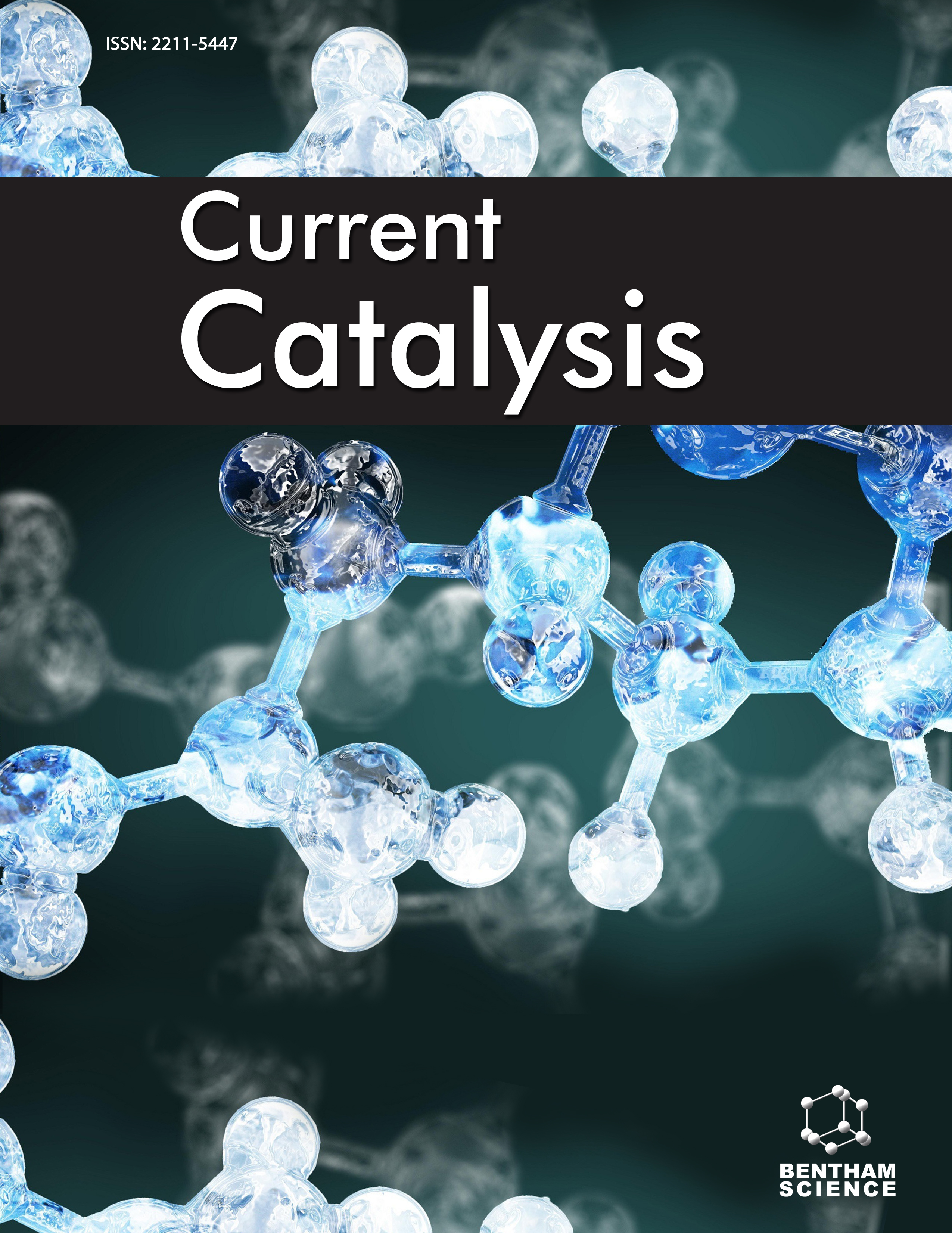- Home
- A-Z Publications
- Current Catalysis
- Previous Issues
- Volume 1, Issue 2, 2012
Current Catalysis - Volume 1, Issue 2, 2012
Volume 1, Issue 2, 2012
-
-
Phase Transfer Catalysis – Basic Principles, Mechanism and Specific Features
More LessAuthors: Mieczyslaw Makosza and Michal FedorynskiA short account of discovery, development of basic mechanistic concepts, and variants of Phase Transfer Catalysis is presented.
-
-
-
Influence of Palladium on the Hydrocarbon Distribution of Fischer- Tropsch Reaction Over Precipitated Iron Catalyst
More LessAuthors: Wensheng Ning, Xiuchen Yang and Muneyoshi YamadaPalladium was impregnated to precipitated iron catalyst as a promoter. The catalysts were tested in a fixed bed reactor to convert CO and H2 into hydrocarbons. Compared with pure iron catalyst, more CH4 and less olefins in C2-C4 hydrocarbons are produced from the iron catalyst promoted only by Pd. The olefin ratio in C2-C4 hydrocarbons of the catalysts promoted by Pd, Zn and Cu is between the values of pure iron catalys Read More
-
-
-
Catalytic Effect of Organoaluminium Chloride Reagents on the Dienophilic Reactivity of Indolizine and 2-Phosphaindolizine towards [2+4] Cycloaddition: A DFT Investigation
More LessAuthors: Neelima Gupta, Rajendra K. Jangid, Raj K. Bansal and Moritz von HopffgartenThe catalytic effect of the aluminium chloride reagents R1AlCl2 (R1 = Cl, Me, Et) on the dienophilic reactivity of the >C=C< functionality of indolizine and >C=P- functionality of 2-phosphaindolizine in their Diels-Alder (DA) reaction with 1,3-butadiene has been investigated theoretically at the DFT (B3LYP/6-31+G**) level. The activation barriers of the DA reactions of the uncomplexed dienophiles with 1,3-butadiene are quite Read More
-
-
-
Ligand Tethering by Ion-Exchange for the Immobilization of Homogeneous Catalysts
More LessAuthors: I. Such-Basanez, C. Salinas-Martinez de Lecea and M. C. Roman-MartinezA Rh phosphine complex, derived from the Wilkinson's catalyst, has been immobilized by ion-exchange on the ammonium form of a Al-MCM-41 sample. Ammonium ions have been exchanged by cholamine ions, which act as an amine ligand, and then the Wilkinson's catalyst has been immobilized by substitution of a phosphine ligand by the anchored amine. This is a novel immobilization procedure, as a ligand, instead Read More
-
-
-
Synthesis of Oxazolidinones/Polyurethanes from Aziridines and CO2
More LessAuthors: Qing-Wen Song, Ya-Nan Zhao, Liang-Nian He, Jian Gao and Zhen-Zhen YangFrom the viewpoint of sustainable development, chemical fixation/utilization of CO2 in an environmentally benign manner has been drawing much interest, especially in the field of organic chemistry. In this review, 100% atom economical routes such as the reaction of CO2 and aziridines to prepare oxazolidinones and polyurethanes with more consideration given to the catalytic strategies and insight into the reaction mecha Read More
-
-
-
HCOOH/RuCl3·3H2O: An Efficient Hydrogen Transfer System for Highly Chemo- and Stereoselective Semihydrogenation of Diaryl Acetylenes Affording trans-Stilbenes
More LessAuthors: Jie Li, Renqin Zeng and Ruimao HuaRuCl3·3H2O-catalyzed stereoselective transfer semihydrogenation of diarylacetylenes with HCOOH as hydrogen source affording trans-stilbenes in good to high yields is developed.
-
-
-
Microbial Transformation of (+)-α-Pinene to (+)-Verbenone by Resting Cell Suspension of Cladosporium Cladosporides
More LessAuthors: Siddhardha Busi, Ramanjaneyulu GS and Prabhakar SBiotransformation of (+)-α-pinene to (+)-verbenone using shaking cultures of Cladosporium cladosporides (MTCC 1003) was investigated. Cladosporium cladosporides showed specific transformation of (+)-α-pinene with 86.8±3.0% conversion (relative integrated area gas chromatography–mass spectrometry (GC-MS)) of (+)-verbenone in 7 day incubation. The amount of verbenone formed was observed at Read More
-
-
-
Jet Fuel Hydrocarbons Production from Catalytic Cracking and Hydrocracking of Soybean Oil
More LessAuthors: Huali Wang, Shuli Yan, Manhoe Kim, Steven O. Salley and K. Y. Simon NgHydrocarbons representative of jet fuel were produced by both catalytic cracking and one-step catalytic hydrocracking of soybean oil in a lab-scale flow reactor. The yield of kerosene/jet fuel hydrocarbons by catalytic cracking over a commercialized ZSM-5 was as high as 21%. Both temperature and space velocity exhibited irregular effects on the product distribution. Steady state was not attained and significant amounts of tar a Read More
-
-
-
Coupling of Cyclohexanol Dehydrogenation-nitrobenzene Hydrogenation Over MgO-Al2O3 Hydrotalcite Supported Cu Catalysts: Effect of Cu Loading
More LessAuthors: C. V. Pramod, M. Suresh, V. Mohan, B. Sridevi, B. David Raju and K. S. Rama RaoA series of Cu/ (MgO-Al2O3) hydrotalcite catalysts have been prepared by impregnation technique with a Cu loading ranging between 5 to 25wt%. The prepared catalysts have been characterized by BET technique, X-Ray diffraction, temperature programmed reduction (TPR) and N2O pulse chemisorption techniques. Cyclohexanol dehydrogenation and nitrobenzene hydrogenation (individual reactions) and coupling of these t Read More
-
Most Read This Month
Article
content/journals/ccat
Journal
10
5
false
en


